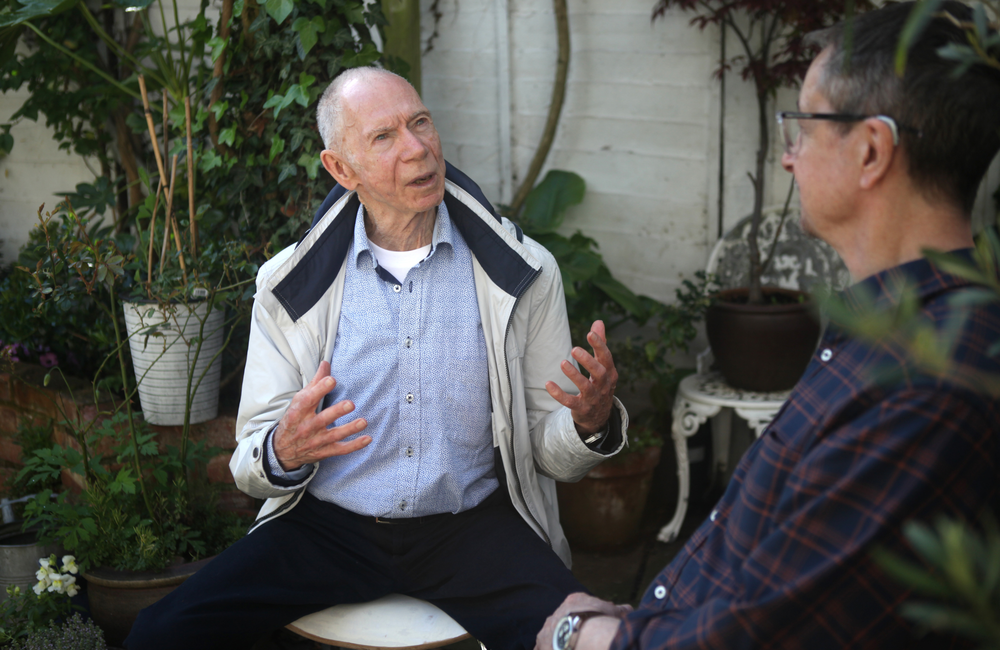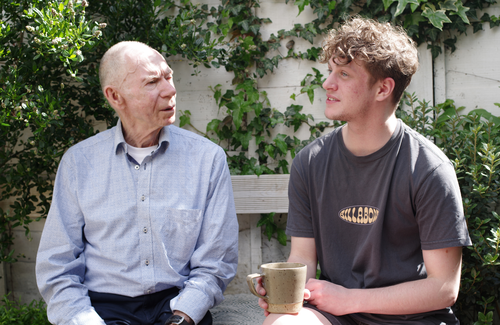
Untreated HIV accelerates the ageing process by up to half a year for every year without antiretroviral treatment, but suppressive antiretroviral treatment stops this accelerated ageing and may even slightly reverse it, according to a Swiss study that tracked markers of ageing that can be read from the bundle of human DNA over 17 years.
The findings, published in the journal Lancet Healthy Longevity, report on markers of epigenetic ageing in people with HIV in the Swiss HIV Cohort.
Epigenetics is the study of how the activity of human genes is switched on or off by environmental factors such as stress, smoking, diet and sleep, without affecting the underlying DNA code. Epigenetic changes can be detected by DNA methylation, where methyl groups attach to cytosine, one of the four building blocks of human DNA.
Changes in DNA methylation over time can be read like a clock and show the difference between chronological age (age in years) and epigenetic age (the ageing effects of environment, diet, smoking, disease and other stressors). The epigenetic age is sometimes referred to as the cellular or biological age.
Some methods of measuring epigenetic ageing are more sophisticated than others. For example, epigenetic clocks differ in their treatment of smoking. Some newer clocks capture the specific effects of smoking by looking for the epigenetic changes that are the legacy of a smoking habit. Others adjust more precisely, by using patient data on smoking history as well as genetic data, to calculate epigenetic age.
Epigenetic clocks also calculate ageing based on different regions of DNA. Some sample DNA only from blood; others use DNA from a range of tissues. If any health condition or environmental stressor is causing changes at different rates across tissues, it becomes critical to know what those effects are. For example, does HIV infection lead to greater epigenetic effects in body organs or blood cells? How do changes in blood cell populations caused by HIV affect the measurements of epigenetic clocks?
Faster epigenetic ageing can predict the risk of serious health conditions related to ageing as well as an increased risk of death. Although there is some evidence from single-measurement, or cross-sectional, studies that people with HIV experience accelerated epigenetic ageing, this process has not been studied over time in people with HIV.
The study
Swiss HIV Cohort researchers studied samples from 80 people had been living with HIV for a median of 15 years before they started antiretroviral treatment. Approximately two-thirds of the cohort were male (65%) and almost all (95%) were White.
Several risk factors for cardiovascular disease were common in the cohort. Over half (52%) had abnormal levels of cholesterol or triglycerides, one in five had high blood pressure, 56% were current smokers, 17% were former smokers and one in four had hepatitis C.
DNA methylation was measured at four time-points, twice before starting treatment (a median of eight years apart), and twice after being on treatment and reaching viral suppression, a median of nine years apart. The median interval between the last measurement before starting treatment and the first measurement when virally suppressed was 1.3 years.
The researchers compared the pace of epigenetic ageing using five different epigenetic clocks (Horvath, Hannum, SkinBlood, PhenoAge and GrimAge). All clocks except GrimAge (which adjusts for disclosed smoking behaviour) showed that epigenetic ageing was accelerated compared to chronological age during the untreated HIV phase of the study. The pace of epigenetic ageing on these clocks varied from 0.36 additional years to 0.69 additional years over and above every chronological year of follow-up.
Accelerated epigenetic ageing was associated with a greater increase in CD8 cells during untreated HIV on one clock but other immunological and HIV-related factors did not consistently modify the results shown by epigenetic clocks.
After starting treatment and reaching viral suppression, all clocks apart from GrimAge showed a significant although modest reduction in the pace of epigenetic aging. The pace of reduction of epigenetic ageing on these clocks varied from -0.26 years to -0.49 years. One clock showed an association between greater CD4 increase and a greater reduction in the pace of epigenetic ageing, but others did not show any effect of HIV-related or immunological factors. The type of antiretroviral therapy did not affect the pace of epigenetic ageing.
“Our long-term results confirm how suppressive ART is the key intervention that can improve the biological ageing process in people with HIV,” the research group concluded. “When HIV infection is controlled by suppressive ART, the measured epigenetic age tends to equate the epigenetic age equivalent to the person’s chronological age.”
The researchers say that the lack of effect shown in the GrimAge clock is consistent with other studies showing that it performs differently from other epigenetic clocks in people with HIV, perhaps because it is less influenced by changes in the composition of leukocytes, a type of white blood cell whose activity is altered by HIV.
The differing results between clocks suggest that each clock is measuring different aspects of the ageing process, the researchers say, but more research is needed to define which clocks most accurately reflect cellular ageing in people with HIV. Further research in a much larger population is also needed to correlate epigenetic changes to subsequent clinical outcomes including cardiovascular events, frailty and healthy ageing.
Schoepf I et al. Epigenetic ageing accelerates before antiretroviral therapy and decelerates after viral suppression in people with HIV in Switzerland: a longitudinal study over 17 years. Lancet Healthy Longevity, 4: e211-218, 2023.
Titanji BK. ARTful ageing: epigenetic rejuvenation in people with HIV. Lancet Healthy Longevity, 4: e181-2, 2023.

